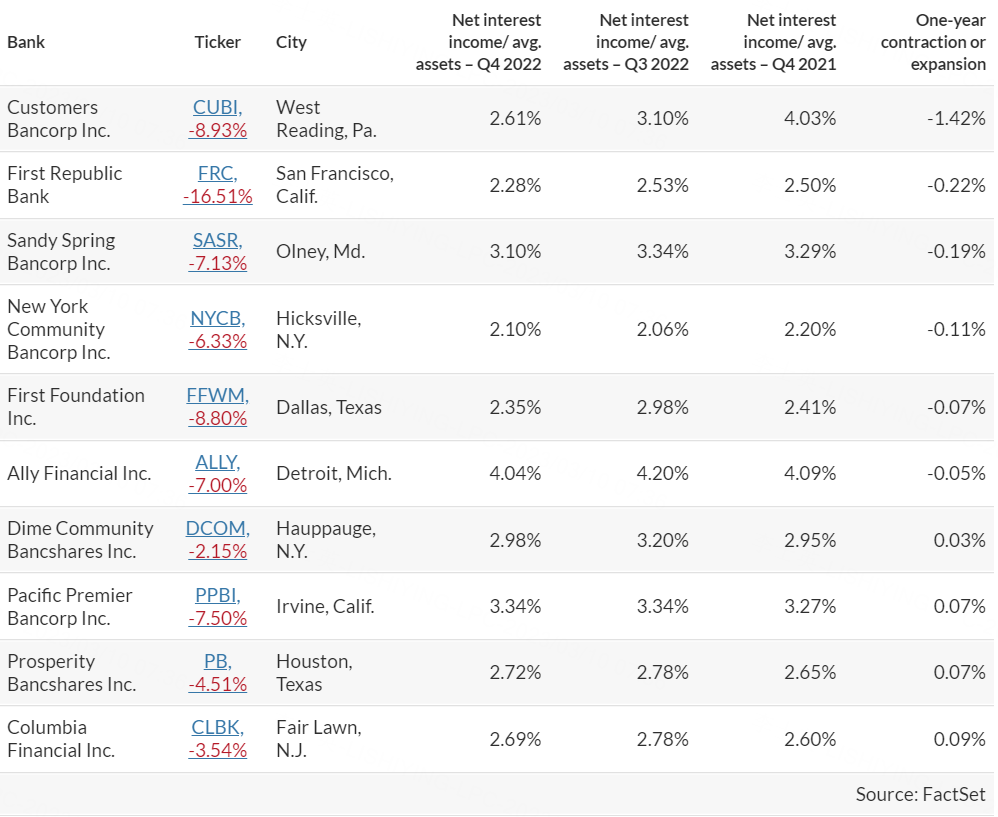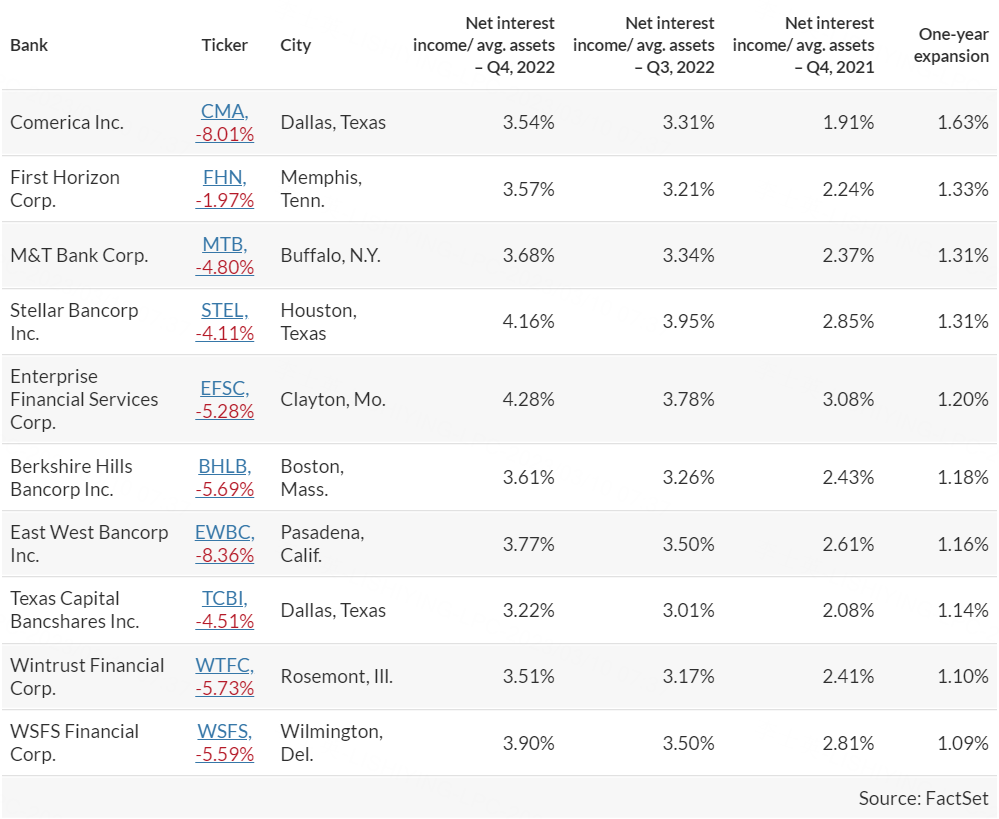Silicon Valley Bank wasn't well positioned for rising interest rates, leading to losses and a dilutive capital raise. Other banks show similar red flags.

As interest rates have risen, many banks have become more profitable because the spreads between what they earn on loans and investments and what they pay for funding has widened. But there are always exceptions.
Below is a screen of banks that are bucking the industry trend of expanding net interest margins, followed by another list of banks whose margins have widened the most over the past year.
On March 8, SVB Financial Group (SIVB) sold $21 billion in securities for a loss of $1.8 billion. SVB is the holding company for Silicon Valley Bank of Santa Clara, Calif. It had $212 billion in assets as of Dec. 31.
The bank said it was repositioning to "increase asset sensitivity, to take advantage of the potential for higher short-term rates, partially lock-in funding costs, better protect net interest income (NII) and net interest margin $(NIM)$, and enhance profitability."
In light of the loss on the securities sales, SVB will raise $2.25 billion in new capital through two offerings and a private placement. The prospect of dilution to shareholders' ownership positions resulted in the company's shares sliding as much as 62% on March 9.
The entire banking industry seemed to take it on the chin on March 9, with the KBW Nasdaq Bank Index sinking 7.5%.
See Tomi Kilgore's coverage for more details on SVB's offerings, the securities sale and reaction.
Red margin flags
Before SVB Financial decided to take such a dramatic step, the movement of its net interest margin was signaling that the bank wasn't well positioned for the combination of rising interest rates and slowing loan growth in the venture capital space.
A bank's net interest margin is the spread between its average yield on loans and investments and its average cost for deposits and borrowings. This is an annualized calculation. Here's how the NIM moved for SVB Financial over the past year:
SVB's net interest margin narrowed considerably during the fourth quarter, and it widened only slightly from the year-earlier quarter.
So now the question is which other banks might face pressure because their net interest margins have contracted, or because their margins have only expanded slighlty?
Starting with a list of U.S. banks with total assets of at least $10 billion, and removing purer investment banks, such as Goldman Sachs Group Inc. (GS) and Morgan Stanley (MS), we looked at 108 banks.
A uniform set of net interest margins for the past five quarters isn't available from FactSet for the full group -- it is only available for 56 of the banks. So instead, we screened for net interest income (total interest income less total interest expense) divided by average total assets.
By this screen, 102 of 108 banks showed expanding margins for the fourth quarter from a year earlier.
Here are the 10 showing contracting margins over the past year, or the smallest expansions of margins:
SVB Financial ranked 11th worst in the screen, with net interest income/average assets of 1.93% in the fourth quarter, up from 1.83% in the year-earlier quarter.
Most margin improvement
To end on a positive note, these banks showed the widest expansion of margins, based on net interest income divided by average assets:



精彩评论